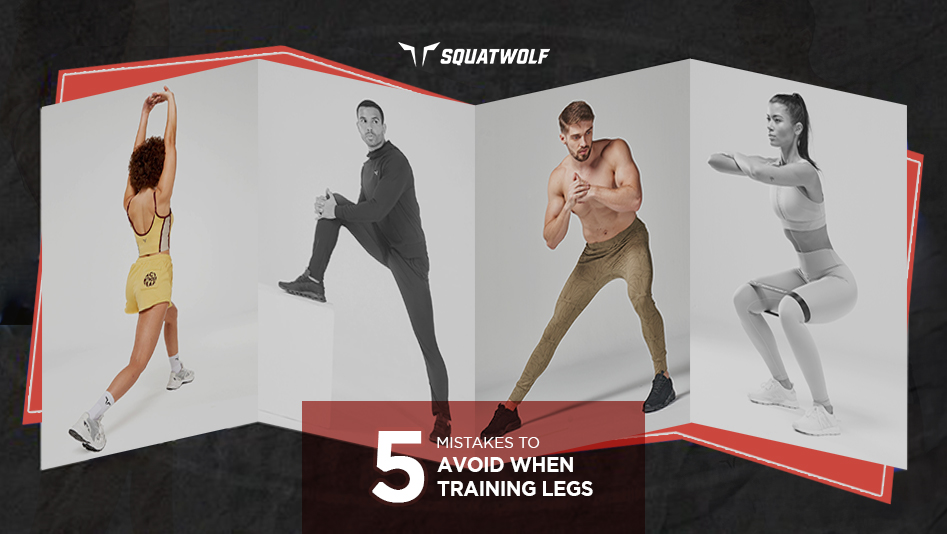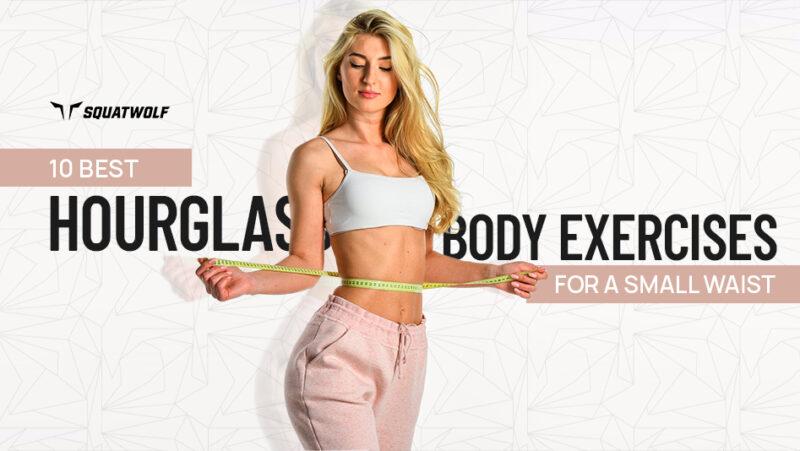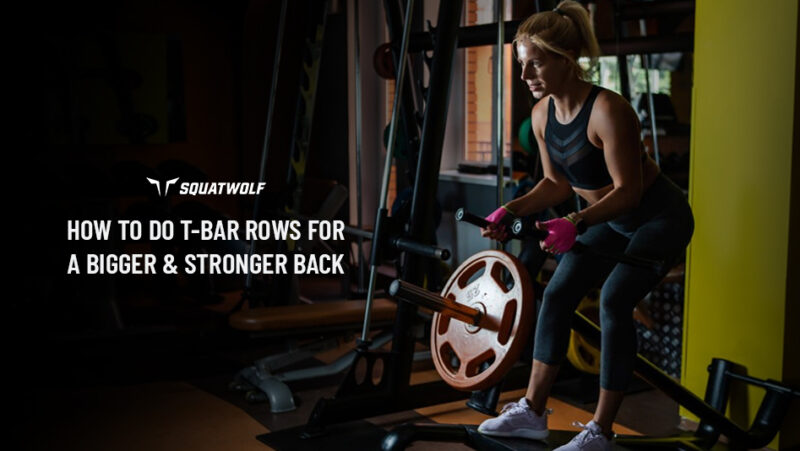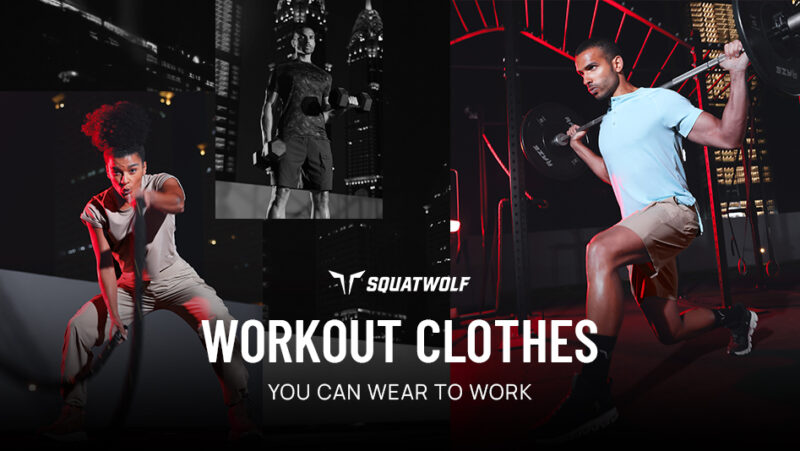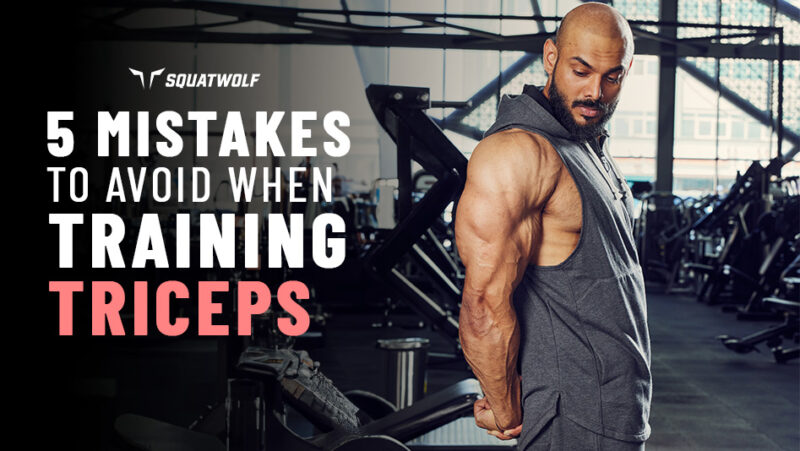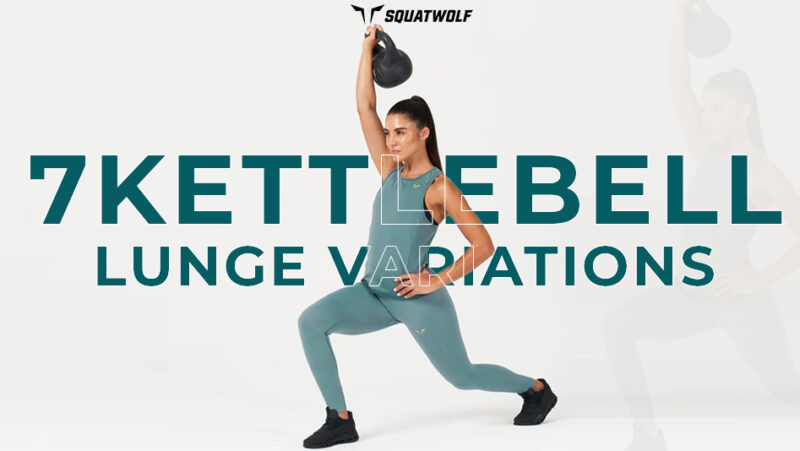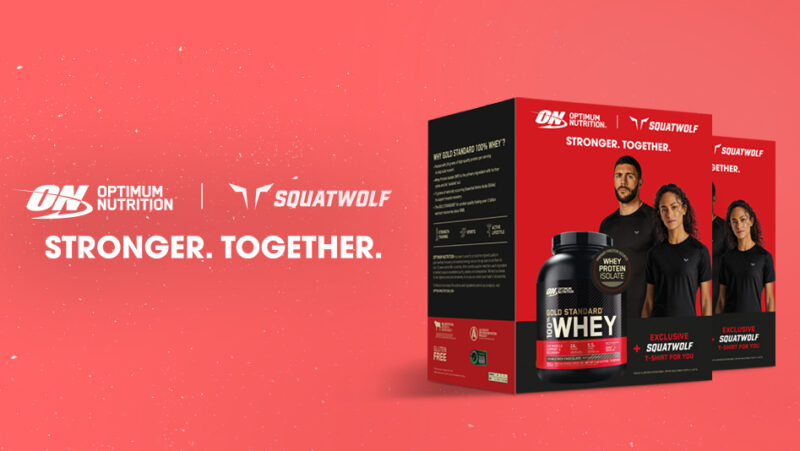Your calendar might say it’s ‘Wednesday’ today, but for a gym rat, it’s leg day all over again. This is the day where legacies are redefined… the day when the whole lifting game is changed. It’s the day where your strength, endurance and agility – all are put to test.
You may stride into the gym in full confidence and immediately, the thought of ‘Bulgarian squats’ will send shivers down your spine. Whether it’s that extra large lunge step or that ego making you lift too heavy on the squats, there’s something or the other you’re not doing right.
It’s important to hit legs in the right way. This is because a proper leg training routine not only shapes your lower body, but also optimizes your overall performance. And, this amps up your entire physique!
In this guide, you’ll learn about the 5 main leg workout mistakes you need to avoid to build those titan legs!
Build powerful legs with these 6 leg exercises!
Skipping Your Pre & Post-Workout Routine | Underemphasizing Compound Movements | Poor Squatting Method | Overdoing Quad-Focused Moves | Overlooking Unilateral Leg Exercises | Workout Clothes | Worst Leg Exercises | Key Takeaways | FAQs
Skipping Your Pre & Post-Workout Routine

One of the worst ways you can set yourself up for an injury is by skipping your mobility routine and post-workout stretches.
Injury Risk
Proper mobility work i.e. dynamic stretches warm up your cold and stiff muscles. If you workout on cold and inactive muscles, you’ll end up injuring or spraining yourself. On the other hand, if you don’t do your post-workout stretches, you’re going to have tight and sore muscles that’ll take too long to recover. This will also impact your overall flexibility and could lead
Impact On Gains
If you don’t warmup properly, you won’t be able to lift easily. In addition, your lifts will be lighter even if you have the strength to lift more. Without the effectively and efficiently lifting weights, your muscles won’t grow. On the flip side, without a cool down routine, your muscles won’t have the after-care they need to recover quickly and smoothly. Your muscle growth actually happens when you give them enough rest time to recover. And since cool down is a crucial part of recovery, its even more important to do it!
What To Do Instead?
- Make up a 10-minute mobility routine before workout where you get your muscles warmed up. You can do cycling, walking, jogging, jumping jacks. Once done with some light cardio, go for leg swings and side-to-sides, leg circles and curtsy lunges.
- After your workouts, go for a 10-minute static stretching routine – pull your quads, stretch your hammies and go for some calf stretches. This will loosen up any muscle cramping due to the workout and keep you flexible.
Boost your post leg day training recovery with these 5 cool down exercises!
Underemphasizing Compound Movements
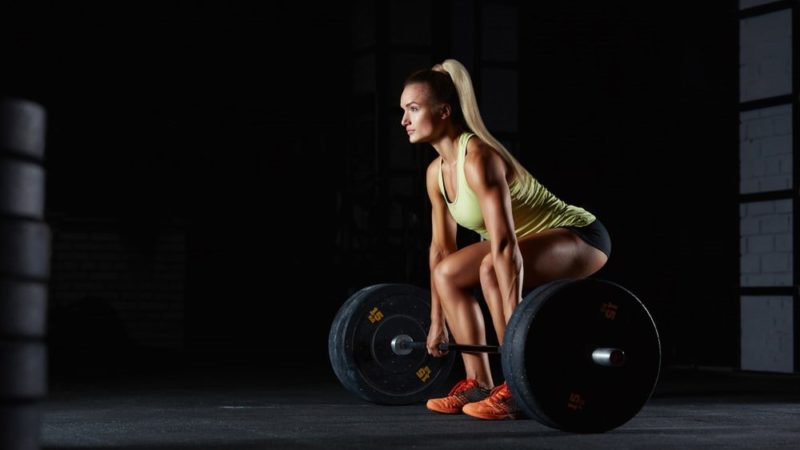
Compound movements work several muscles at once – from several muscles within your legs to your core and stabilizers, everything gets some action. They’re part of functional training because these movements not only boost your strength, but also aid your functionality.
Injury Risk
While overlooking compound movements won’t injure your directly, it could pave the path to injuries in the future. This is because without hitting compound exercises, you’ll have a weak core and stabilizers. This will compromise your posture and structural balance. This means you’ll have difficulty in coordinated movements such as playing sports or doing Yoga, leading to injuries. In addition, without a strong core and proper posture, you’re likely to end up with lower back problems during heavy lifts. Since your stabilizers are likely to be weak as well, you could develop knee or hip problems in the long-run.
Impact On Gains
Since compound exercises such as lunges, deadlifts and squats activate several lower body muscles, stabilizers and your core, they build exceptional strength. They improve your mobility, muscle coordination, balance and functionality – everything you need to boost your leg strength. Without compound movements in your routine, you’ll end up with poor leg strength. This will also compromise your athletic abilities, especially if you’re a sportsperson.
What To Do Instead?
- Incorporate squats, deadlifts and lunges into your leg day routine.
- Make sure you include varieties of each compound movement and keep shifting them up every time you hit legs to create exercise variety and shock your muscles.
- Progressively overload through increased reps, increased sets, more weights or banded exercises to amp up resistance in your training ritual.
Ladies, step up your lower body strength with this leg workout for women!
Poor Squatting Method
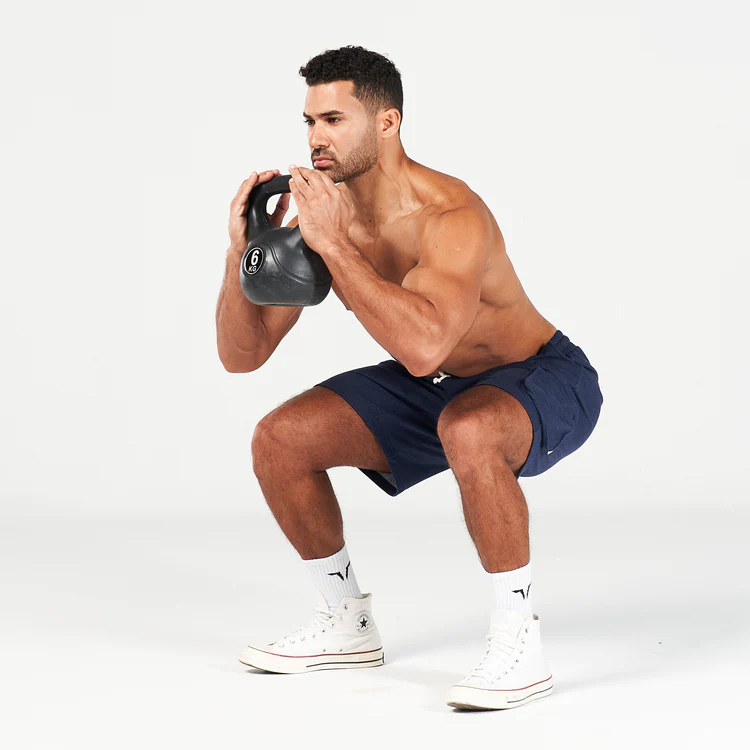
King of leg days, squats are a powerhouse move that work all your leg muscles. But without the right technique, they just won’t be effective. In fact, you’ll end up harming yourself more than benefiting!
Injury Risk
One common mistake with squats is letting your knees go inwards, not going deep enough and curving or arching your back. These mistakes can lead to several problems such as knee joint pain, back injuries (including disc dislocation) and muscle tears. This is disastrous in both, the short-term and the long-run.
Impact On Gains
Without proper form, you’re not working your muscles the right way. This means you’re not engaging the right muscles, which hampers your muscle growth. This also takes the load off your target muscle such as glutes and hamstrings and brings it onto your quads instead. As a result, if you’re aiming for glute development, you’re actually ending up with quad activation. What’s more is, you’re also risking your overall health and wellness. Let’s say you’re deadlifting heavy weights, but don’t have the right form and round your back. You’re likely to end up with lower back pain rather than activating your lower body and core.
What To Do Instead?
- Go for lightweight squats or resistance band squats while maintaining proper form.
- Make sure you practice different variations of squats such as quad-focused and glute-focused. Also, mix it up with lateral squats, half squats, deep squats, etc.
- If you’re still struggling with your form, consider hiring a personal trainer.
Do this dumbbell leg workout on your next leg day – be it at home or at the gym!
Overdoing Quad-Focused Moves

Your quads are at the forefront of your legs, which means they’re always the first ones to be getting the work!
Injury Risk
Overtraining your quads can lead to chronic knee problems as it can wear out your knee joints and ligaments. In addition, if your quads are stronger and more built compared to your other muscle groups, it leads to disproportionate muscle development and a greater risk of ACL. With your knee joints impacted, you’re more susceptible to strains and sprains.
Impact On Gains
If your quads are overly developed with little to negligible development of the back of your legs, there will be a muscular imbalance. Your legs will also not be optimally developed, which hampers your functional strength. This won’t just impact your leg-focused performance, but also your overall coordination, especially during compound moves.
What To Do Instead?
- Add hamstrings focused exercises into your routine such as RDLs, leg curls, sumo squats, hamstring-focused leg presses, etc. to build your hammies.
- Mix and match compound and isolated leg muscle exercises so all your lower body muscles are engaged and developed.
Not sure where to start? Here are the 6 leg exercises that should be a staple in your leg workouts!
Overlooking Unilateral Leg Exercises

Single or isolated leg exercises play an important role in helping you achieve a well-rounded and fully functional lower body. They help you build lower body strength, allowing you to perform well in sports and other daily activities.
Injury Risk
If you don’t do single leg exercises, you’re likely to end up with imbalances in your body. This is because one side is always dominant on the other one. Let’s say you’re doing compound movements – your dominant side will take up more of the load, becoming even stronger and more developed. This means your weaker side will continue to look underdeveloped in comparison. This also increases the risk of injuries especially when you’re climbing stair, running, or throwball type of sports.
Impact On Gains
Without single leg or unilateral leg exercises, your dominant leg will continue putting in more work. This means one leg will be stronger, more defined, more toned and more developed than the other. This means your body could become asymmetrical. By doing unilateral or single leg exercises, you’ll be able to strengthen your weaker leg, eliminate imbalance, increase muscle size and promote physical symmetry. This will also better your stability and coordination.
What To Do Instead?
- Incorporate single leg exercises such as single leg glute bridges, single kickbacks, Bulgarian split squats, single-leg deadlifts and single-leg donkey kicks.
- Make sure you do equal reps on both your legs and use the same weights. If you feel a lack of contraction in one or weaker leg, then do a few more reps to eliminate disparity.
- If your weaker leg still doesn’t develop, tweak your training methods by starting your workouts with the weaker leg, lifting more weight with it and doing more reps on it.
Don’t have access to the gym? Do these 5 lower body exercises at home!
Gear Up In The Right Workout Clothes
When it comes to hitting legs, you want to make sure your gear supports agility and flexibility. This is why, it’s important to wear not just active wear, but athleisure that boosts performance!
Recommendations
Ladies, make sure you’ve got:
- Workout leggings or shorts on with a supportive sports bra and distraction-free workout tee or tanks.
Fellas, you can hit legs right in:
- Your gym shorts or tights along with a stringer or gym t-shirt.
10 Worst Leg Exercises to Avoid On Leg Days
If you do your workouts with the right form, chances are you won’t get leg injury from lifting. However, if you don’t have the right technique, you’re likely to end up chronic problems, especially if you exert excessive pressure on your knee or thighs.
For those who have a prior injury or just can’t do certain exercises right, here are a few exercises to avoid with leg pain – and their substitutes:
| Worst Leg Exercise | Why It’s Bad | Safer Alternative | Benefit of Alternative |
|---|---|---|---|
| Behind the Neck Leg Press | Puts excessive strain on the lower back and knees. | Standard Leg Press | Targets leg muscles effectively without straining the back. |
| Smith Machine Squats | Can lead to an unnatural squatting motion, increasing injury risk. | Resistance Band Squats | Improves balance and engages stabilizer muscles naturally. |
| Seated Leg Extensions | Puts undue stress on the knees, especially the ACL. | Walking Lunges | Strengthens quads and improves joint stability. |
| Upright Leg Curls | Can strain the knee joint and offers limited hamstring engagement. | Lying Leg Curls | Provides better hamstring isolation and reduces knee strain. |
| Adductor Machine | Can cause hip and groin strain due to unnatural movement patterns. | Lateral Lunges | Strengthens inner thighs with natural body movement. |
| Sissy Squats | Places excessive pressure on the knee joints. | Goblet Squats | Strengthens quads while maintaining a safe knee position. |
| Deep Knee Bends | High risk of knee injury due to extreme joint flexion. | Box Squats | Allows controlled depth, reducing knee strain. |
| Stiff-Legged Deadlifts | Can lead to lower back pain if not done with perfect form. | Romanian Deadlifts | Targets hamstrings and glutes effectively while protecting the back. |
| Standing Calf Raises with Bent Knees | Less effective for calf muscles and can strain the knee. | Seated Calf Raises | Isolates calf muscles better and reduces knee strain. |
| Jump Squats with Weights | High impact on knees and ankles, risky with added weight. | Bodyweight Jump Squats | Provides similar benefits with reduced joint impact. |
Key Takeaways
Leg days will always be a pain, but as long as its your muscle that’s sore, you’re good to go. By doing your warmups and cool downs, stretching your limbs, incorporating compound movements for strength and isolate workouts for muscular balance, and pushing yourself beyond your limits, you’ll be doing leg days the right way!
FAQs
There are certain rules you should follow when you’re hitting legs, whether it’s at home or at the gym. Make sure you’re not skipping out on your warmups or post-workout cool down stretches to prevent injuries and boost recovery. In addition, don’t overdo quad-focused exercises or neglect hamstring-focused leg workouts – make sure your leg days target each muscle of your legs. Don’t ego-lift either as this compromises your form, so make sure you’re prioritizing your form over heavy weights. Furthermore, do add
Ideally, you should train your legs 1-3 times a week. If you follow the push-pull-leg split workout routine, then you’re likely to hit every third workout. By training your legs at least 2-3 times a week, you’ll be giving your muscles enough time to grow, rest and recover. This will also build your strength at the same time. If you’re training your legs intensely, then make sure you give your legs enough time to rest and recover, all the while maintaining a protein-rich diet. Just stay consistent and get high quality reps when you’re doing leg exercises so that you don’t end up injuring yourself.
Exercising with leg pain depends on the type and severity of the pain. If it’s mild muscle soreness (like DOMS – Delayed Onset Muscle Soreness), light to moderate exercise could actually help in recovery. However, if the pain is sharp, acute, or due to an injury, it’s advisable to rest and avoid putting strain on the affected area. Listen to your body and, if in doubt, consult a healthcare professional. It’s crucial not to push through severe pain, as this could lead to further injury and prolonged recovery time.
It depends on how much it hurts and the intensity of your pain. For instance, if your muscles are mildly sore because of working out, any other kind of activity or hurt because of stiffness, then doing leg workouts can help you get rid of the pain. On the other hand, if you have any acute or chronic conditions, sharp aches, injuries or other conditions, you should rest and avoid doing strenuous workouts. If you’re not sure, then do consider a health professional. However, avoid overexerting yourself when your leg hurts because this could worsen your pre-existing condition.
If you suffer from knee pain, try these 4 Patellofemoral Syndrome Exercises For Stronger Knees.
If you’re struggling with leg pain, then avoid any exercises that are excessively heavy-weighted or that cause shock to your knee joints. These could include heavy weight squats, leg presses, deadlifts, jumping squats, and other forms of jumping. Rather, go for low-impact workouts such as cycling, swimming or Stairmaster. In addition, avoid doing deep lunges or leg exercises with twisting or deep stretching, especially in areas that already hurt. If your pain persists, consult a healthcare professional.

